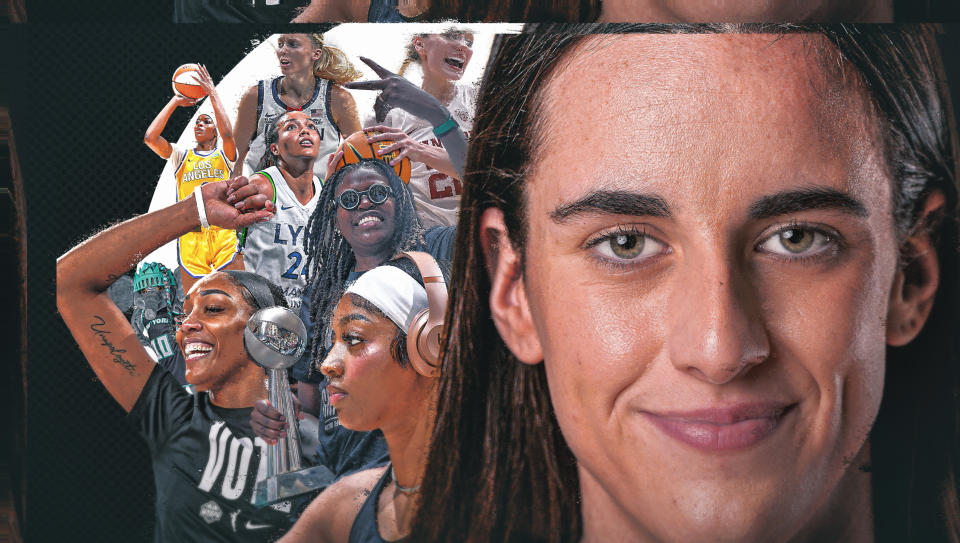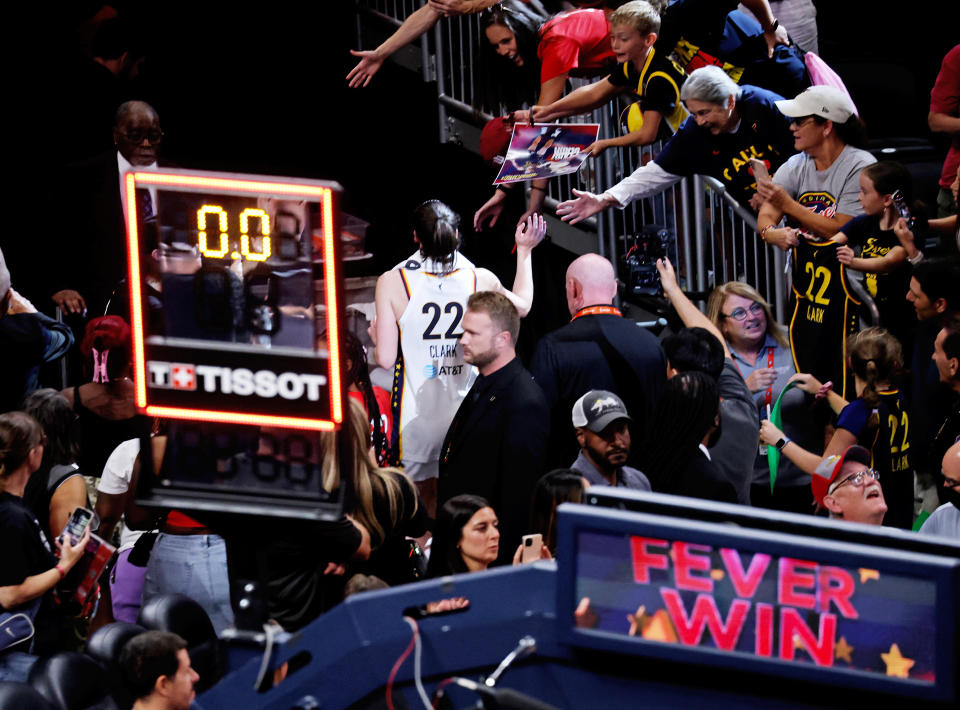
The day after defeat in the 2024 NCAA women’s basketball championship game, Caitlin Clark had one goal upon arriving back at the University of Iowa campus.
Go home.
She headed to her car that April day and drove two hours to her childhood house in West Des Moines. She was in search of the calm of familiarity, the comfort of her room and some time with the family dog, Bella.
“Had my mom cook me a meal,” Clark said.
The next day she drove back and headed off — a one-day respite between the highs and lows and demands and chaos of an historic college season and the highs and lows and demands and chaos of an historic professional season as the focal point of the WNBA.
These were a rare few moments of normalcy for a 22-year-old who defined the 2024 sports calendar like no other by redefining two levels of the same sport, if not what is possible for women’s athletics in America. Along the way she found herself in the middle of sports and culture arguments that she never seemingly sought.
Others won championships or Olympic medals, but no one impacted things like CC herself.
The same week she helped draw an astounding 18.9 million television viewers for that title game (South Carolina 87, Iowa 75), not to mention tickets soaring above $2,000 on the secondary ticket market, she would make a guest appearance on Saturday Night Live to promote the WNBA draft, which, days later, itself would set viewership records (2.4 million).
She was a beacon caught between two worlds.
This was her new life, the star of everything, all eyes on her at all times.
It had come slowly — a gifted multi-sport athlete who turned her home state program into a national contender — and then seemingly all at once. A NCAA scoring record. An exhibition game at a football stadium featuring 55,000 fans. Texts from celebrities and national advertising campaigns; all while young girls lined courts begging for autographs and selfies.
At first, fans bought her jersey, a sign of fame. Soon they started selling a simple black t-shirt with the outline of the state of Iowa and “HER” printed in the middle. Everyone knew who it was about.
Her confident flair, her logo threes and her length-of-the-court passes defined her game and turned heads in ways women’s basketball had never seen. It wasn’t just that Clark could play the game. There have been plenty of great women’s players. It was how she played the game.
There was a joy to it, both in what she put out there and what the fans took in.


It’s why they flocked to arenas and television sets every time she played. She both created new fans and energized existing ones. She was Must-See TV.
As great as her impact was on college, she was the rare — perhaps first — star to carry it immediately over to the WNBA, whose season started about a month later. Indiana Fever games were moved to larger stadiums to accommodate demand. Television ratings began to challenge those of the NBA. Media and fan attention didn’t wane during ho-hum regular season games.
With it came revenue and sponsorships, to the point where the league began chartering flights for the first time. Soon expansion franchises were being announced.
To anyone with perspective, she was a gift — such as when Tiger Woods electrified golf. This was a lightning bolt for the sport.
“[I want to] thank Caitlin for what she’s done for women’s basketball,” South Carolina coach Dawn Staley said after her team beat Iowa in that national title game. “Her shoulders were heavy and getting a lot of eyeballs on our game. And sometimes as a young person, it can be a bit much, but I thought she handled it with class.
“I hope that with every step of the ladder of success that she goes, she’s able to elevate whatever room she’s in,” Staley added.
Clark would. And yet she would also somehow become something of a divisive figure, a pressure point for the politically obsessed who wanted her to be this or that or whatever they saw in her. Most of the time, she was none of that; just a ball player.
Every rivalry was magnified. Every bit of doubt blasted across the internet. Hard fouls became near crimes and her exclusion from the US Olympic Team a slight some couldn’t accept — even if, at the time, there was a reasonable argument for the decision. Everyone went to their corners.
She met resistance for being the hot-shot rookie, but also, it seems, for her race or other attributes. That brought her a category of fans as well who defended her. When in a Time Magazine interview she spoke of her “privilege” as a white woman, many people seemed to switch sides.
Well, at least until the owner of the Washington Mystics — who has made money off of her — argued the “Athlete of the Year” should have gone to the entire WNBA because others “deserve” the honor as well.
Clark was being lifted up and torn down all at the same time — a Rorschach test in real time.
In the end the noise is the noise though, culture wars and cable talk shows that have little to do with Clark the athlete, Clark the player, Clark the sensation.
Across that rookie season with the Indiana Fever she didn’t just adjust to the pro game, she excelled at it, leading her team to the playoffs and winding up first-team all league.
And when all of the shouting and projecting ends, when the commercials are done and the selfie-requests are fulfilled, that’s where it will return — to the uber-competitive Iowa kid who just wants to play ball the way few others have ever played ball.
“When I’m playing my best basketball,” Clark said last winter, “is when I’m having the most fun out of anybody on court.”
The fun is just beginning. And that’s all that matters, or at least all that should.
